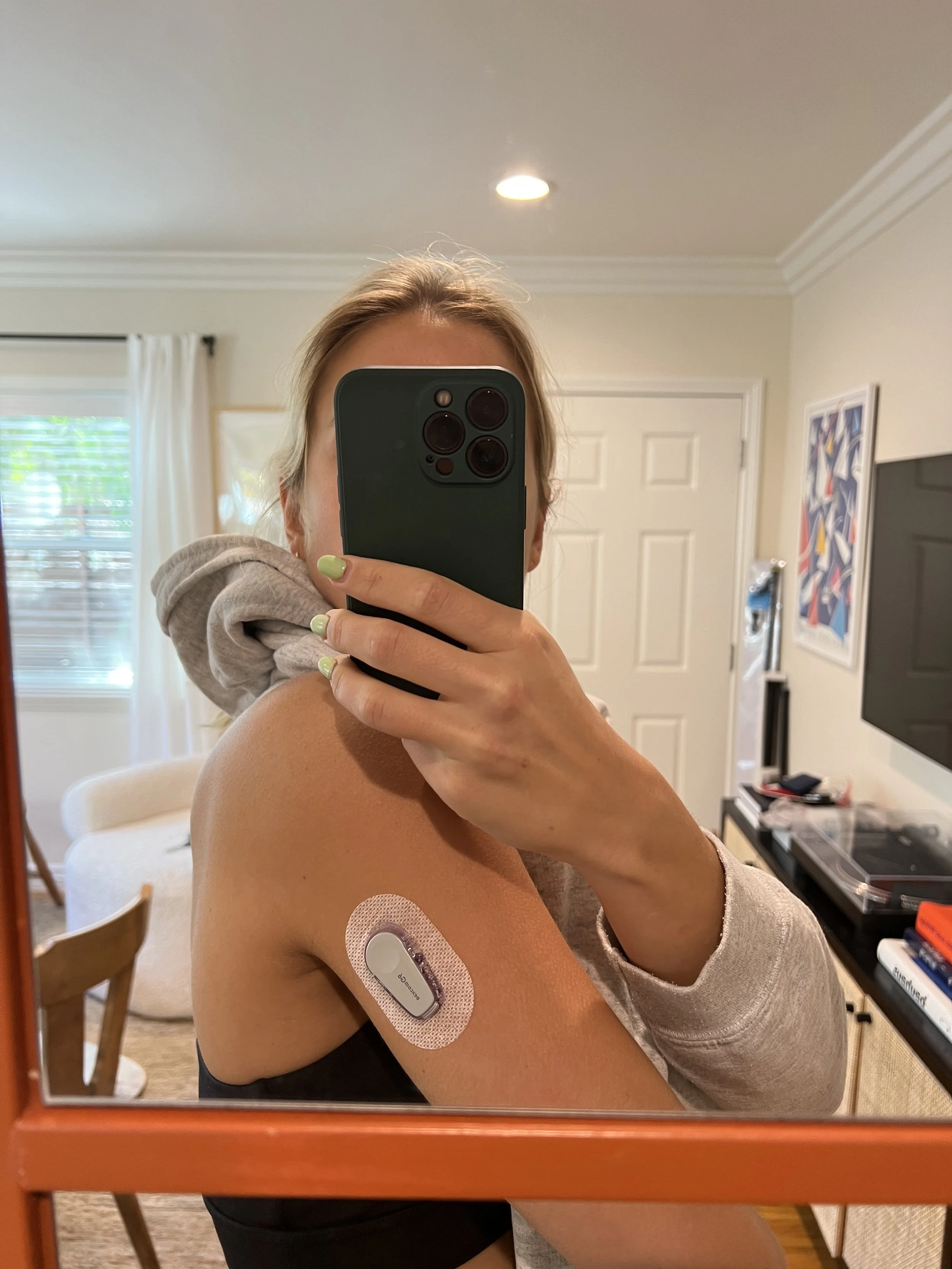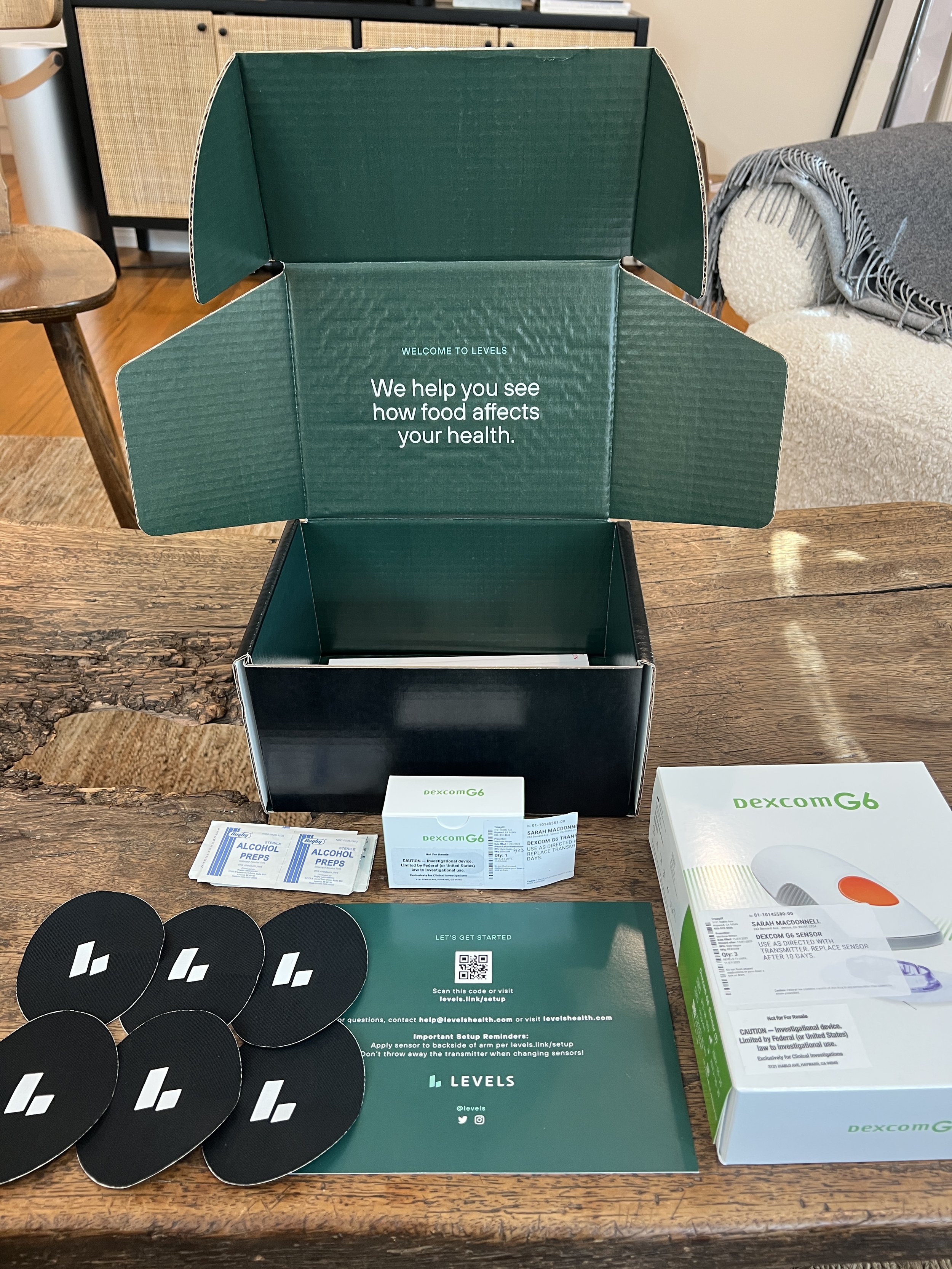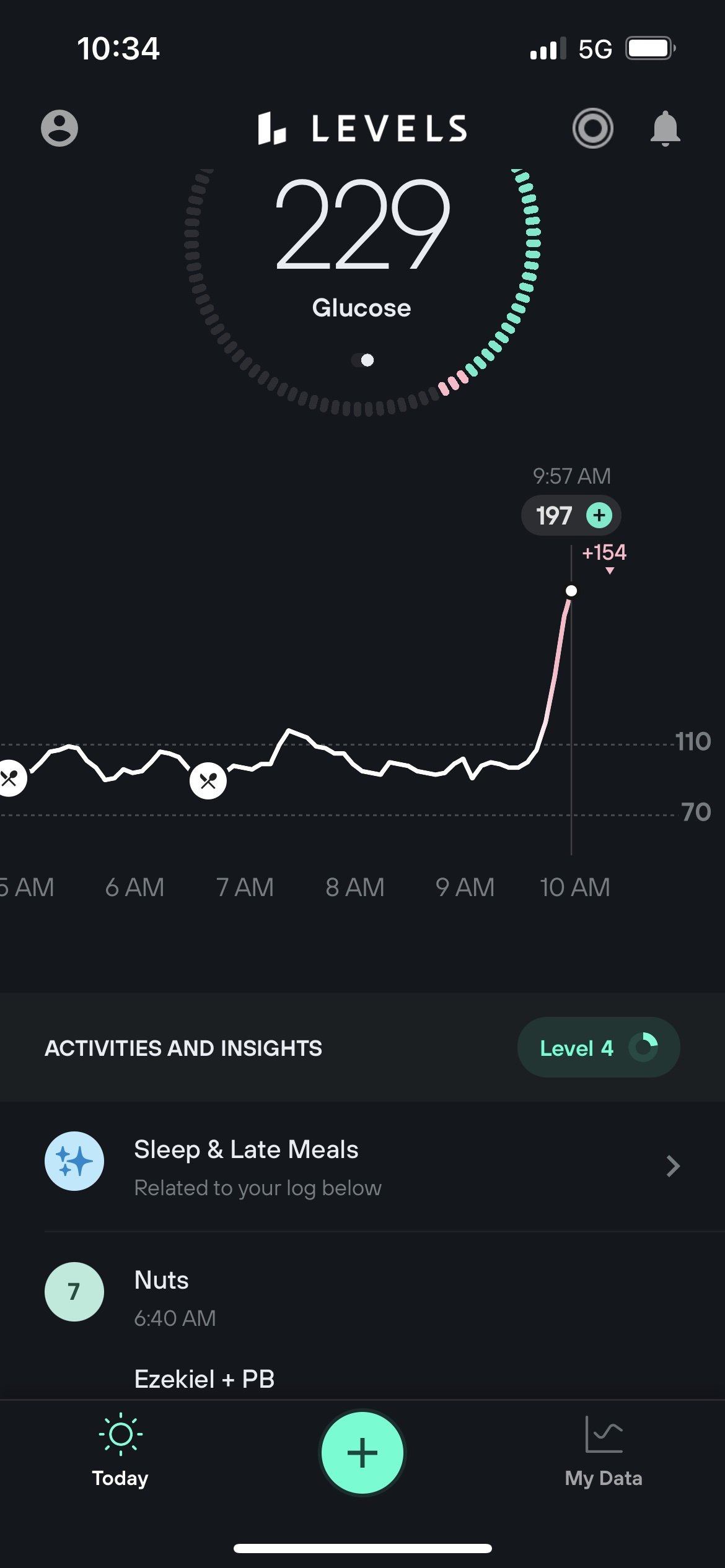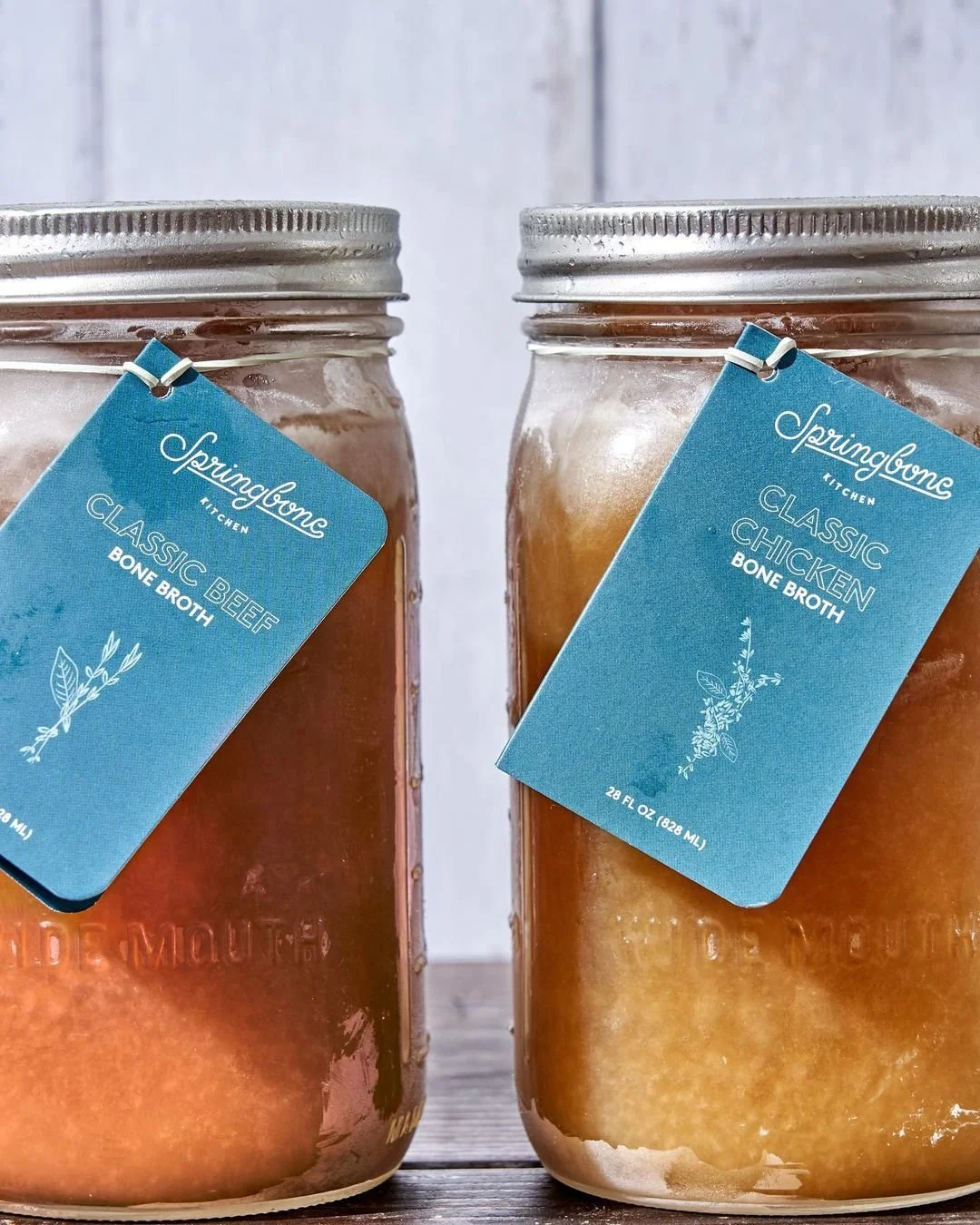I Tried Levels, The Waitlist-Only CGM
WHAT IS A CGM? CGM is short for Continuous Glucose Monitor. It’s a small, discrete patch you put on your stomach or the back of your arm that, you guessed it, continuously monitors the amount of glucose in your bloodstream and delivers it to an app on your phone.
A technology once only used by diabetics has received an exciting facelift by the company Levels. They’ve taken hardware manufactured by companies like Dexcom and Freestyle and adapted it to their sleeker tech, including a great blog of resources and an app with top-notch insights designed to elevate and translate the data. Levels was the first company to make blood sugar monitoring possible for people without diabetes, effectively taking the first data-driven step towards prevention. The opportunity for the public to better understand and improve their metabolic health is key if we want to reduce the number of people who need to rely on costly diabetes interventions down the road.
CGM technology is exciting because it gives users a personal snapshot into exactly their our body is responding to food and choices they make every day. These choices include the foods we eat, when we eat them, what we pair them with, in what order, and how it’s all is connected to lifestyle factors like exercise, sleep, and stress. With a clear picture of our metabolic health in a nutshell, we can make informed decisions about how best to optimize our diet and lifestyle for our unique makeup.
Until recently, Levels membership came with a long waitlist. I was lucky enough to sign up early and test it out! The results are in.
What is metabolic health? According to emerging data and top experts including Mark Hyman, who called Levels CGM “the gadget that revolutionized my health”, metabolic health is the key to halting or reversing aging and chronic disease. Metabolic health and metabolism are frequently misunderstood, understood only in terms of their role in controlling weight (describing people who eat whatever they want and never gain weight as “oh, she has a fast metabolism”). While they play a central role in how we gain and lose weight, metabolic health is about much more. For our purposes, it can be understood simply as how our body is managing blood sugar levels.
Metabolism describes “the cellular mechanisms that generate energy from our food and environment in order to power every single cell in the body. When these energy-producing pathways run smoothly, we have optimal metabolic health.”(i)
But what are the parameters for good metabolic health exactly?
Requirements include “optimal levels of five markers: blood sugar, triglycerides, high-density lipoprotein (HDL) cholesterol, blood pressure, and waist circumference—without using medication.”(i)
Aka, the opposite of diabetes. The good news is all of these markers can be improved by the right dietary and lifestyle choices, especially if addressed early with preventative measures. We can determine exactly what these measures are by checking in on our metabolic health with CGM like Levels.
To understand blood sugar, let’s talk about diabetes. Diabetes is a disease of insulin resistance. When we eat sugar and refined carbs, they are quickly absorbed into the bloodstream, causing a rise in glucose levels. In response, our body pumps the hormone insulin to combat the glucose and bring levels back to baseline. When we consume the Standard American Diet of refined sugar, carbohydrates, and processed food, over time our body becomes resistant to the effects of insulin and we need more and more to return to baseline after repeated glucose spikes. Hence the need for diabetics to manually pump insulin as soon as their blood sugar reaches unhealthy levels. The first stage of insulin resistance is “insulin sensitivity”, and warning signs include glucose spikes that stay elevated for too long, go too high, exhibit lots of instability (spikes and crashes), and an increased sensitivity to healthy “complex” carbs from whole food sources likes sweet potatoes, squash, amaranth, and fruit.
WHY IS THIS IMPORTANT?
Type II diabetes is entirely preventable and/or reversible by eating a metabolically healthy diet and understanding how our bodies respond to food.
Unlocking your metabolic health will make you feel and perform better than ever before. Benefits include:
Weight loss and increased fat-burning ability
Stable and sustained energy throughout the day
Sharp memory
Increased exercise endurance and athletic performance
Stable mood
Clear skin and decreased wrinkles
Improved fertility and sexual health
Stronger immunity
Beyond diabetes, lower risk of other chronic diseases like Alzheimer’s, obesity, fatty liver disease, heart disease, stroke, and many more.
If you care about any of those things, read on.
CGM and COACHING:
One of the reasons I was so excited to test this tech is because I want to offer my Health Coaching clients the opportunity to explore their own metabolic health. The Levels CGM offers super insightful, action-oriented data that I can guide them through, help translate, and extract solutions and personalized recommendations from.
My experience with Levels (and subsequent ranting about it while home for Thanksgiving) actually lead my Dad to order a kit and try it out. It was a great experience to coach him through the process, and it was ultimately very eye-opening. He went into it curious about the effects of food on his body after noticing symptoms like fatigue, decreased energy, and post-meal lagging. He found that a lot of foods he though were “healthy” like amaranth, rice, homemade sourdough bread, white potatoes, and GF pizza did not work for his body and caused overly-elevated glucose spikes, especially when paired with stress. He had to make significant modifications to his diet to regain energy, optimize performance, and avoid worsening metabolic health—and I’m very glad he did!
LEVELS 101:
COST:
$199 for a 1-month kit + $200 yearly membership fee = $400
Levels is a premium service that not everyone can afford. Hopefully this changes some day, allowing more people to be able to access this information. 1 monthly kit is more than enough monitoring to give you the data you need to start making better choices and figure out what works for your bofy. Then, maybe order a kit 5 years down the road to check in on your metabolic health. This isn’t data that non-diabetics need to monitor continuously or long term (and hopefully it stays that way).
SETUP:
The kit (pictured above) includes:
6 Levels covers (left) to put over your patch (which I had not yet done when I took the title photo for this post)
Dexcom G6 tech: sensor and applicator (both in box to the right), and transmitter (in the small box, top center)
I know it can vary whether you receive Dexcom or Freestyle Libre. The setup process was very easy. I scanned the Levels QR code and followed the instructions. I had to download both the Dexcom app and the Levels app.
When applying the sensor, it couldn’t have been easier. I swiped my arm with the alcohol wipes. You peel off the sticker cover, align it where you want it to go (Levels recommends the back of your arm), flip off the safety on the button on the top of the applicator, and press down. You hear a click, and the applicator easily pulls away to leave the sensor. I didn’t feel anything. I pressed down on the patch to make sure it was well adhered to my skin. Then, you take the transmitter which is essentially a small chip that sends data to your phone, and you insert it into the sensor. From the image I took of myself with the patch on, the transmitter is the grey tab on top. At that point, you can place the Levels black and white cover on top to better protect it.
Going into the process, I had a basic understanding of 3 things.
FIRST, how to eat to optimize blood sugar:
Avoid refined carbohydrates (white flour, white bread, pasta), refined sugar and it’s cheaper, more dangerous alternatives (high fructose corn syrup, candy), processed food, and fast food.
Focus on protein, fat and fiber.
If consuming simple carbs or quickly-absorbed sugar, pair it with a healthy meal of fat, fiber and protein. Eat the healthier foods FIRST to blunt glucose spikes.
Pair meals with exercise to blunt glucose spikes
Don’t eat simple sugars or carbs alone and on an empty stomach (I.e. the difference between an apple alone and an apple with peanut butter is huge).
“Natural” sugars are still sugar. Fruit is better because it has fiber to blunt glucose from so rapidly entering the bloodstream. Candy is terrible because it is highly concentrated and has nothing but sugar, causing a full-on glucose assault.
SECOND, the general range of glucose levels to stay in:
between 70-110 mg/dl
ideally not exceeding 140 mg/dl
THIRD, lifestyle factors that played a role in blood sugar regulation:
Exercise (when, what, how much)
Sleep quality, and not eating too late at night
Stress
Medication
To be honest, I was a little annoyed at first about these guidelines. I always eat fruit on an empty stomach, and I usually eat pretty plant-based until dinner (so probably not adequate protein). I am a snacker, preferring to graze throughout the day rather than sit down to a whole-ass meal. It’s inconvenient to prepare and it breaks up my day, especially if I’m running around. I hoped I could still do these things without issue. We’ll see…
BASICS:
To optimize the data I received during the month, I was advised NOT to try to have a “perfect” diet. That would defeat the point of determining my unique “line”, aka, what perfect combination of factors allowed me to still stay within a metabolically healthy range but also enjoy my life. Everyone reacts differently, so experimenting with as many different foods as possible in different ways would give me more information and nuanced data to observe.
Could I have x food? If not, what if paired with y food? What if I walked after? Would it be fine to eat within 2 hours of bedtime if it was a healthy meal? the list goes on.
To get Levels insights, you must:
Log meals, making sure they are entered at the right time (or if entered later, edit the time stamp)
Log exercise. if it is particularly strenuous, the Levels app gives you the option to click a box labeled “strenuous” so it doesn’t effect your “Zone score” (will circle back on that)
Log any notes—if you experienced more stress than normal, any medications, etc.
Once Levels has this information, they will provide:
A graph that maps our your glucose as it rises and falls throughout the day. This enables you to see how your body reacts right after you eat a meal. If it rises gently, then returns back down, this was a good glucose response. If it rises sharply, maybe that meal wasn’t great. If it rises sharply and remains elevated for a while, this should be avoided at all costs. You can filter for stability, average daily glucose, and other indicators depending on what aspect of metabolic health you want insights on.
A Zone Score for 2-hour periods, which is an analysis of the impact on your blood sugar from a combination of factors that occured during that window. The score is from 1-10—1 being a complete disaster (think, eating a pound of candy with a liter of Coke and then having a job interview) and 10 being a perfect metabolic meal of fat, fiber and protein followed by a walk.
Below is a snapshot of what the app looks like on the home scree. If I were to scroll down, you would see all the activities and food I logged that day with corresponding Zone scores from 1-10, plus helpful insights and tips/tricks from Levels.
The above screenshots are taken on the same night (one on right is just more zoomed in on the evening). As you can see, throughout the day I remained in the healthy zone of glucose between 70-110 mg/dl except for a brief dip in the evening. Shortly after 9pm, I ate Olly Sleep melatonin gummies. I was interested to see what would happen because they only have 5 grams of sugar from beet sugar, which I thought might be healthier than regular sugar.
Turns out it’s not. Lol. My blood sugar rapidly spiked more than 50 mg/dl. FROM TWO GUMMIES. I was pissed. Moving right along…
On the “My Data” tab and toggled to Meals, you can see my best and worst meals by zone:
Main shocker right off the bat was that an apple on an empty stomach and by itself was a 2, my worst score ever. Somehow, sugary cocktails paired with a whole meal were better than one piece of fruit. Noted..
Second takeaway (that did not come as a surprise) is that sugary cocktails are NOT it. No matter what they’re paired with. The few times I consumed them this month made the corresponding Zone Scores plummet. On the right hand list of my best metabolic meals, it comes as no surprise that protein like turkey paired with fat (feta) and fiber (flax crackers, tomato, carrot) was a 10/10. Also coffee with milk/cream, only fat. Zero carbs, all healthy, few ingredients, all recognizable.
I continued testing things…
Experiment #2: red wine
Experiment #3: dark chocolate
Experiment #2: red wine, paired with a meal
Score: 7
Thank god. I had 2-3 glasses with a healthy meal and did not experience a spike
Experiment #3: low-sugar dark chocolate
Score: 7
Interesting given it wasn’t paired with a meal, BUT I combined zero sugar chocolate (lily’s) with coconut sugar-sweetened (hu kitchen) and a peanut butter cup with honey and some carbs
My guess is the positive score comes from the fact that chocolate is inherently NOT a low-fat food. The fat in it and extra fat from the zero-sugar chocolate likely blunted a spike.
Experiments #4-7:
cocktails (sugar free or honey-sweetened), squash with maple syrup, and grain-free cake
Experiment #4: sugar-free cocktails, paired with a healthy metabolic meal:
Score: 8
This is amazing. I wasn’t surprised by the cocktails because I made them at home with Lakanto Monk Fruit Simple Syrup, so zero sugar and no glucose rise. What did surprise me is with the added red wine AND squash roasted with maple syrup (experiment #6), my glucose remained low.
I am guessing this positive result is because I paired everything with a healthy meal of protein (lamb), fat (keto crackers, oil, lamb, almonds and manchego in salad), and fiber (kale, squash, brussels).
Experiment #5: honey-sweetened cocktails, paired with heavy apps:
Score: 8
This shocked me. I assumed these drinks, although homemade and with honey, would cause a sharp spike. But since we’d been snacking, cooking, and served them with fat (labne, almond flour crackers) and protein (shrimp), no spike occured.
Experiment #6: grain-free cake, after a metabolic meal
Score: 8
I mean… what. The Sweet Laurel cake is considered “healthy” because the ingredients are pure (which isn’t always relevant to blood sugar), but its certainly not low-carb or low-sugar.
The combination of likely higher fat ingredients IN the cake (almond flour, coconut) and the fact that it was eaten after a healthy metabolic meal of protein (short rib), fat (labne, almond flour crackers, oil, almonds and manchego in the salad), and fiber (squash, kale), any negative effects were overrided.
A LESSON IN STRESS:
While coaching my Dad through his Levels experience, I was regularly logging into his app to check his progress and ensure he was logging data. One time, I logged in and did a double take when I saw this:
SOS
229 glucose, a post-meal spike of 154+ mg/dl
I texted him to check in…
He later told me he’d eaten basically a whole gluten-free pizza, a clementine, and a cookie for a lunch, and he was in the middle of a particularly stressful meeting when I texted him. He learned a few things—firstly, gluten-free doesn’t mean it’s healthier. Second, mindless eating due to stress has a negative and compounding impact on blood sugar. This is just one data point proving how critical stress management is to our overall health. Blood sugar should rarely exceed 140 mg/dl. The good news is he never experienced another spike like this. If this was a regular occurrence, he would fall within the parameters of metabolic syndrome and/or diabetes.
This stress-sugar connection is also what explains a slight rise in blood glucose when we consume caffeine or stimulants.
MY RESULTS:
Spikers:
Mega Food Ginger chews (not just for pregnant people, dw)
Cocktails with sugar (even with ideal meal)
Coffee liqueur like Kahlua
Red wine (empty stomach, eaten alone)
Maple syrup (on an empty stomach, in a latte)
Craig’s vegan ice cream and GF brownie bits (after an ideal meal)
An apple (empty stomach, eaten alone)
An apple with 1/4 cup of nuts (empty stomach)
Dates (eaten alone)
Dates with cheese
Raspberries (empty stomach, eaten alone)
Overdoing it on “healthy carbs”—for example, a salad with beets, squash, chickpeas, dates is overkill
Stable:
Red wine (with ideal meal)
Sugar-free cocktails—ones made with Lakanto simple syrup or plain like a gin and soda, vodka soda, etc.
Cocktail with honey (with an ideal meal)
Sweet Laurel Carrot Cake—grain-free, refined-sugar free (after an ideal meal)
Mixed berries with whipped cream (after an ideal meal)
Winter squash roasted with maple syrup and hazelnuts
Kale, turkey and white bean soup
Small portion plantain chips
Real Phat Foods almond flour crackers (these are the only “keto” crackers I like that seem like real crackers)
Flackers Cinnamon and Currant flax crackers (only good flavor)
TAKEAWAYS:
If you’ve made it to the end of this post, congratulations. Here are my high-level takeaways.
I don’t need to be afraid of healthy, whole food carbs (beans, most fruit, starchy veg), as long as they are incorporated in moderation into a meal or paired with fat/fiber—I.e., not eaten alone.
I don’t need to be afraid of honey and maple syrup in moderation when they are INGREDIENTS in a balanced meal/recipe with adequate fat, fiber, and protein.
Sugar in ANY form, at any time, with any pairing, will spike my glucose.
When consuming alcohol, make sugar-free drinks at home whenever possible. When eating out, order mixed drinks with no added sugar, or wine.
Eating meals late at night raises my overall glucose baseline the next day and even days afterwards.
Too many carbs is too many carbs (which turns to sugar), regardless of fat and fiber and timing.
Glucose isn’t the ONLY answer to weight loss. It is just one metric, and it is essential for other reasons. But it isn’t enough alone. For example, things that don’t spike my glucose but must be eaten in moderation: “keto” desserts, sugar-free cocktails, cheese, and any high fat/high calorie meal like excessive red meat.
For health-consciousness, non-diabetic and non-pre-diabetic adults, glucose is a helpful metric to check in on every few years but not necessary to monitor daily/regularly. It is an essential piece to the puzzle to get a snapshot of for a month or two, then move forward with that information as one reference point. It’s important to know where you’re at, understand your body better, and make connections about the best foods for you. Use it to get familiar with your unique constitution and increase awareness, but NOT TO OBSESS. Everything can be taken too far, including taking metabolic data.
Let me know if you have any questions!
Must-Read Levels Blog Posts:















